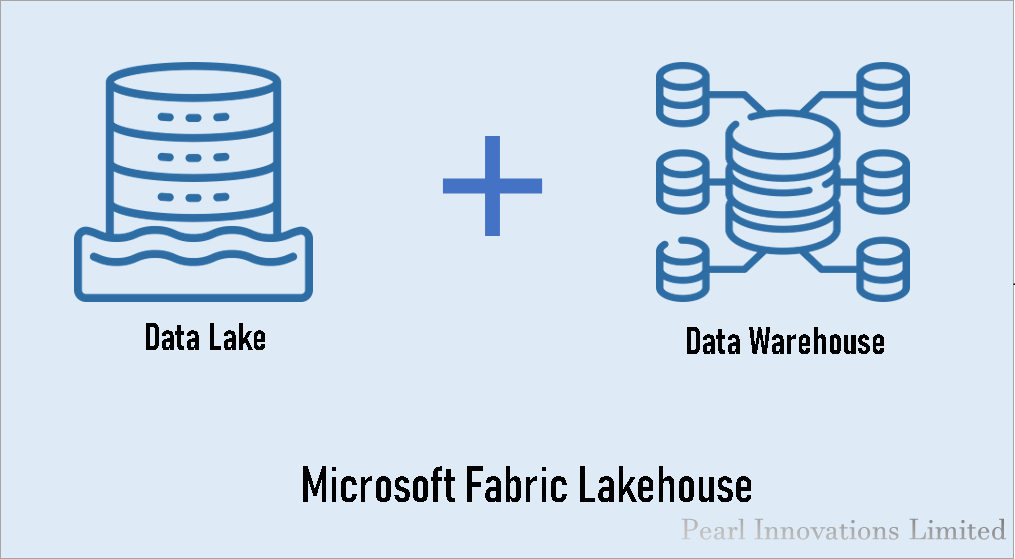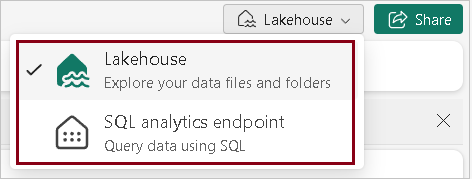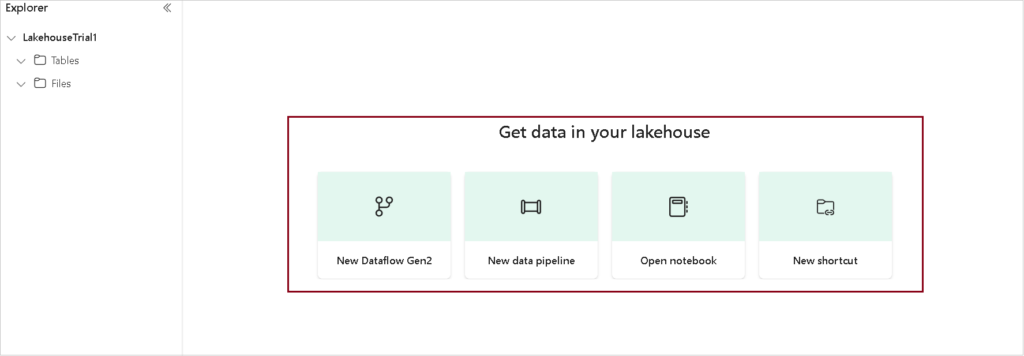Microsoft Fabric Lakehouse is built upon the foundational framework of One Lake. It operates as a comprehensive database that stores both structured data (Data warehouse) and unstructured data (Data Lake) within a unified location. This allows you to effortlessly store, manage, and analyze both types of data, all conveniently centralized in a single location.

If an organization aims to analyze both structured and unstructured data, or if they are already using a data warehouse for structured data from transactional systems but face challenges in analyzing data from social media platforms or website logs, using the existing data warehouse may prove cumbersome.
Microsoft Fabric Lakehouse allows you to analyze various data formats seamlessly.
Microsoft Fabric Lakehouse combines
- The scalable nature of a Data Lake – allows it to effortlessly expand and accommodate growing volumes of data.
- The query and analysis functionality of Data Warehouse – consolidates and organizes various data sources to simplify the process of analysis and reporting.
Explore Fabric Lakehouse
To create a new lakehouse, check out the “Getting Started with Microsoft Fabric Lakehouse lesson- 7” blog for step-by-step guidance.
A Fabric Lakehouse is a modern approach in handling data that blends the strengths of data warehouses and data lakes. It supports various data types, open formats, and economical storage, it also facilitating quick queries, ensuring data quality, and supporting governance.

(Lineage view- workspace page)

(List View – Workspace page)
When a lakehouse is created in Microsoft Fabric, it consists of three distinct items:
- The lakehouse includes both storage and metadata, serving as the place where you work with files, folders, and table data.
- The SQL analytics endpoint acts as a service layer, during creation, automatically generates a SQL endpoint and a default dataset.
- A semantic model in the lakehouse serves as a logical representation of the data, outlining relationships, measures, and hierarchies. It enables users to create business-friendly views of the data and to perform complex calculations and aggregations.
Approaches for working in the lakehouse
You can interact with the data in the lakehouse in two modes.

- Lakehouse mode-With the Lakehouse, you can add and work with tables, files, and folders.
- SQL analytics endpoint mode – The SQL Endpoint provides the ability to use SQL for querying tables in the lakehouse and managing its relational data model.
Lakehouse items
Upon creating a lakehouse, the default landing page is the Lakehouse Explorer. Here, you can interact with the data through various means. The following are the listed items within the Lakehouse.
- New Dataflow Gen2- Dataflow Gen 2 facilitates the ingestion and preparation of data for data engineers. You have the ability to create a dataflow to execute additional transformations using Power Query and, if desired, store the transformed data back into the Lakehouse.
- New data pipeline – A data pipeline is a data integration solution that enables you to link to various data sources and either load the data in its original format or convert it into a Delta table.

- Open notebook – Notebooks offer a platform to write code, enabling them to read, transform, and write data directly to the Lakehouse as tables and/or folders.
- New shortcut – A new shortcut feature allows you to create a shortcut to any file or folder in your lakehouse. You can use new shortcuts to quickly access your frequently used data sources, pipelines, notebooks, or other items.
Benefits of Fabric Lakehouse
The following are some of the benefits of Fabric Lakehouse
- Centralized Data Repository – A lakehouse serves as a single, consolidated storage space for both structured and unstructured data, eliminating the need for separate storage systems.
- Scalability- It can effortlessly grow to accommodate increasing volumes of data, ensuring scalability to meet evolving business needs.
- Unified Location – Lakehouse serve as a centralized hub where data engineers, data scientists, and data analysts can collectively access and utilize data.
- Flexibility in Data Types – Lakehouses accommodate diverse data types, allowing for the storage and analysis of structured and unstructured data in the same environment.
- Data Consolidation– Lakehouses prevent duplication by storing and managing diverse data types in a single location using the open and standard Delta Lake format.
- Integration with Analytics Tools – They seamlessly integrate with other data management and analytics tools, such as Power BI, providing a comprehensive solution for data consumption and visualization.
- Cost Efficiency – Lakehouses reduce the total cost of ownership by leveraging low-cost object storage and optimizing both data processing and query performance.
| Tags | Microsoft Fabric |
| Useful links | |
| MS Learn Modules | |
Test Your Knowledge |
Quiz |
